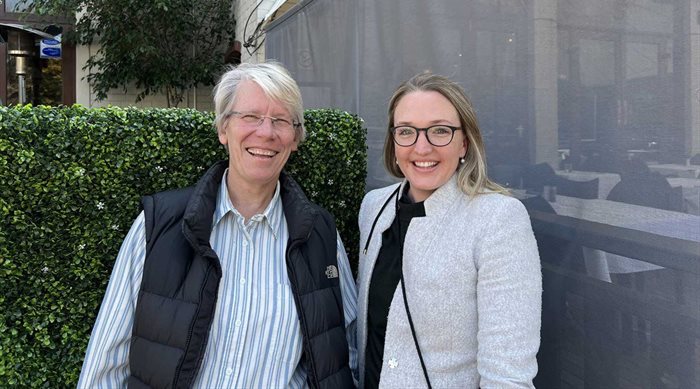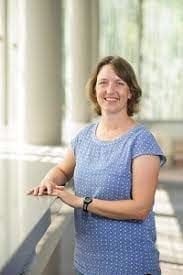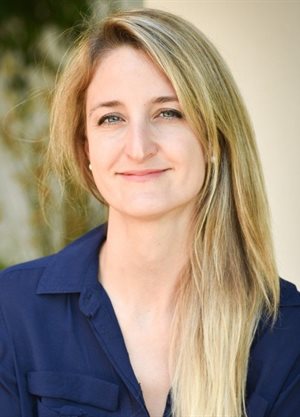





“When we focus on women in steel, we find a number of rich and varied insights and experiences being shared,” says SAISC marketing director Denise Sherman. “It is often said that a career in steel is a calling and this is true for women as well as men as they embrace their passion for steel and the sustainability and well-being of the industry as a whole.”

Linda Ness, director at Durban-based engineering company NJV Consulting, has been in the steel industry for over 30 years and explains that she was actively discouraged from becoming an engineer by the headmistress when she was at school.
“At the same time,” she notes, “there were no barriers to my entering the engineering space as a woman – I just had to have the right academic results. Today, there are still not many women in the steel industry overall, and I believe that working in this space is not merely a job but, instead, a true vocation and an exciting profession, full of possibilities.”
Dr Sarah Skorpen, senior lecturer in the Faculty of Engineering: Built Environment and Information Technology at the University of Pretoria, agrees with Ness. “There are even fewer barriers to entry today,” she says, “but for both men and women equally, it is a challenging career path - requiring candidates prepared to commit to it long-term, because it will take some years to achieve true proficiency. The steel industry is a dynamic space to work in, and offers a rewarding career for those who are dedicated to it.”

Nicolette Skjoldhammer, managing director at Betterect and the current chairperson of the SAISC, agrees that there are some challenges that the industry will present to women in particular.
“If we look at history, most engineering and construction-related industries started off being male-dominated, and some have been faster at achieving a level of diversity than others,” she notes.
“I think the steel sector in particular has been a slow mover in this regard but that it is changing. I believe any industry currently offers challenges - regardless of gender - but that some challenges are unique to women, including within the steel value chain.
"However, I think any situation benefits from diversity for the generation of great ideas, and we need to be agile and creative in order to offer our clients the best solutions. By including women into the broader steel value chain, you create an environment of diverse and innovative solutions and opportunities.”
Emma Loubser, PBA Projects structural engineer, adds: “My experience as a woman within the steel value chain has been mostly positive and ‘smooth sailing’. However, I am aware that sometimes the role of an engineer - combined with the requirements of being on-site - is challenging for women. However, women are able to bring a different perspective to the steel industry, and I believe that celebrating gender differences, and the varied ways in which women approach and solve problems, can be greatly advantageous to the overall empowerment and development of the sector.”

Skjoldhammer explains: “Young women need to be excited about the possibility of becoming engineers, as well as being enthusiastic about the steel industry itself. Additionally, I think it is important for them to see women like themselves in roles of authority within the industry - so they can believe that they, too, can achieve their goals. This is why diversity in the steel industry is so important.”
Dr Skorpen adds: “As a lecturer of engineering students, I am seeing a fairly high gender ratio of women to men currently. In addition, the young women who are represented are culturally very diverse, which is encouraging. I would say that over the past decade, this has been fairly consistent. I believe we are seeing the outcome of education around STEM (science, maths, engineering, technology) careers that was done at school level.
Furthermore, I do feel strongly that those who join the steel industry – both male and female – must be truly passionate about it. It is not simply an issue of being academically strong in maths and science.”

Skjoldhammer endorses the value that the institute can provide by facilitating relationships across the steel sector. She explains: “For me, the SAISC has always been a centre of technical excellence that can provide positive support, guidance and influence. In this information age, people sometimes forget the value of being part of an in-person network and the benefit of exposure to round-table discussions about common challenges where valuable technical knowledge is shared. Through networks that I have created through the SAISC, I have avoided many pitfalls and benefitted from opportunities which I would not have had I not been connected to the institute.”
Loubser agrees, noting: “In my opinion, the relationship between the SAISC and Stellenbosch University, my alma mater, has benefitted the university and its students greatly. The institute had a strong presence at the university during my undergraduate and postgraduate years. Throughout my career, the SAISC has always been very approachable and helpful with technical queries and knowledge-sharing - I have often reached out when I could not find a solution to something.”
Having been part of the consulting engineering team on the 2019 SAISC Steel Awards winning project, Ness is especially passionate about designing with steel in mind.
She notes: “Working with steel is a speciality and I enjoy it thoroughly, as it is elemental and malleable - when I work on architectural projects, steel is king! I believe being a steel designer can be more difficult than working with any other structural medium. The institute is excellent at teaching us how to design steel which is so important. There is a timeless value in engineering design as well as being able to teach this skill.”
Loubser is also a previous SAISC award winner having won the 2011 New Generation Award in the annual SAISC Steel Awards.
She enthuses: “It was a memorable experience, including visits to some of the project finalists’ sites - as well as the aviation training centre and large steel fabricators and merchants. My participation in the Steel Awards gave an insightful picture into how diverse steel and its uses in industry can be.”
Sherman concludes: “The SAISC is proud of its ability to bring diverse roleplayers together, including engineers, fabricators, merchants, mills and other participants in the steel value chain. Irrespective of age, gender or their particular steel-related discipline, this knowledge-sharing and communication is for the overall benefit of the industry.
"We are also very proud of our ‘women of steel’ such as Linda, Nicolette, Emma and Sarah – all representing different and yet integrated and interlinked roles within the steel value chain. The SAISC looks forward to inspiring other such women to enter and be a part of this amazing industry sector!”